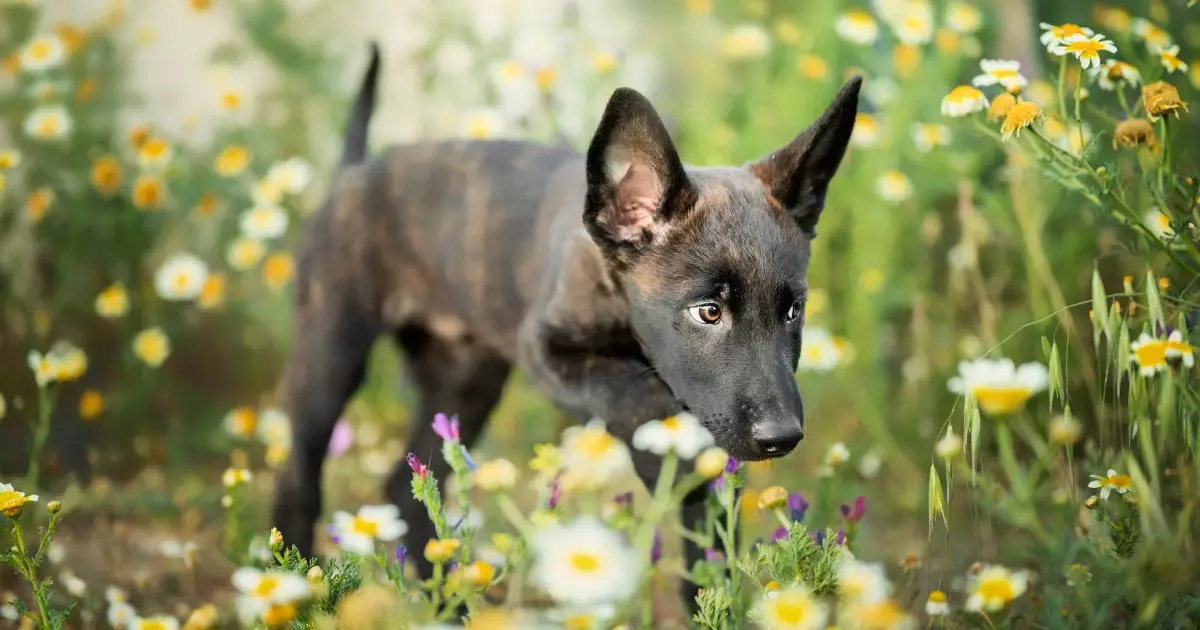From the picturesque landscapes of the Netherlands comes the Dutch Shepherd, a breed rich in history and versatility. Believed to have flourished in the late 19th century, these dogs were initially bred for herding purposes, showcasing their physical prowess and adaptability in various roles. Unlike their more prevalent counterparts, the German Shepherd, Dutch Shepherds offer a rare blend of charm and functionality, making them an intriguing subject for canine enthusiasts.
With roots in the agrarian lifestyle of Dutch farmers, these dogs were essential in managing flocks and safeguarding livestock. Their physical attributes—muscular build, alert demeanor, and grace—allowed them to excel in their primary function: herding. However, their journey didn’t end in the fields; these intelligent canines have evolved to take on diverse roles in today’s world, from police and search-and-rescue partners to loyal cuddly companions.
The Endearing Brindle Coat: A Distinctive Feature
One characteristic that sets the Dutch Shepherd apart is its striking brindle coat. This unique coloration serves not only as a visual hallmark but also as a historical marker pointing to the breed’s evolution. Initially, the breed exhibited a variety of coat colors; however, a 1914 revision to breed standards sought to delineate Dutch Shepherds from other shepherding breeds. The result was a refined focus on the brindle pattern, giving these dogs a unique visual identity.
The brindle coat often reflects the dog’s spirited personality—full of energy and vibrancy. Whether gallivanting through a field or perched adorably on a couch, their appearance resonates with the joyful essence these dogs exude. It’s no wonder that their looks charm many prospective pet owners.
Intelligence and Trainability: The Dutch Shepherd’s Superpower
When it comes to intelligence, the Dutch Shepherd undoubtedly stands among the canine elite. Their capacity for learning and adaptability makes them delightful companions for both novice and experienced dog owners alike. Reflective of their herding background, they have a natural instinct and desire to work, making training exercises a rewarding venture.
Training these pups can indeed be a pleasurable experience, provided that owners create engaging and varied tasks. Enthusiastic and eager to please, Dutch Shepherds grasp commands quickly, setting them up for success in obedience training and beyond. However, it’s essential to recognize the need for socialization during their formative years. Introducing them to diverse environments, people, and other animals fosters confidence and helps mitigate any potential behavioral issues as they grow.
Resilience: A Comeback from the Brink
While the Dutch Shepherd boasts a rich heritage, it also bears a compelling narrative of survival. After facing near extinction during the mid-20th century—due to the mechanization of agriculture and the devastation of World War II—this breed made a remarkable comeback. Their resurgence can be attributed to passionate breeders and dedicated organizations committed to maintaining and promoting the lineage of the Dutch Shepherd.
This compelling backstory adds depth to the breed. It’s a testament to their resilience and adaptability, and it also imbues them with a unique presence. Owning a Dutch Shepherd isn’t just about having a pet; it’s about participating in a legacy.
Active Companions: The Importance of Exercise
Dutch Shepherds are energetic dogs that thrive on regular exercise. Without it, they risk becoming overweight and lethargic, which can lead to various health issues. Ideally, they require open spaces where they can run and engage in stimulating activities. Whether it’s a game of fetch in the park or an agility course in your backyard, regular physical activity is crucial for their overall well-being.
Moreover, Dutch Shepherds flourish in environments where they can socialize and play with other dogs. This breed does not do well being left alone for long periods, as they require companionship to thrive. Their sociable nature encourages bonding with family members and makes them eager participants in family activities.
Health Considerations: Understanding Potential Risks
Though generally healthy, prospective owners should be aware of certain health risks associated with Dutch Shepherds. Hip dysplasia, progressive retinal atrophy (PRA), and elbow dysplasia are potential concerns to monitor, especially as they age. As with any breed, regular veterinary check-ups, and a focus on a well-balanced diet can greatly improve their quality and longevity of life.
Keeping an eye on their health is paramount, and responsible ownership encompasses understanding their needs—both physical and emotional. Life with a Dutch Shepherd is undeniably rewarding, providing loving companionship that is unmatched.
The Joy of Adoption: Choosing a Dutch Shepherd
For anyone considering adding a Dutch Shepherd to their family, adoption should always be a top choice. Numerous shelters are filled with these unique pups waiting for a chance to share their lives with loving families. In doing so, potential owners not only gain a loyal companion but also contribute to the broader effort of giving these remarkable dogs a second chance.
In a world brimming with breeds, the Dutch Shepherd stands out not only for its distinct appearance and capabilities but also for the heart and history it brings to our homes. These dogs serve as a reminder of the bond we share with animals and the joy they can impart in our lives.

